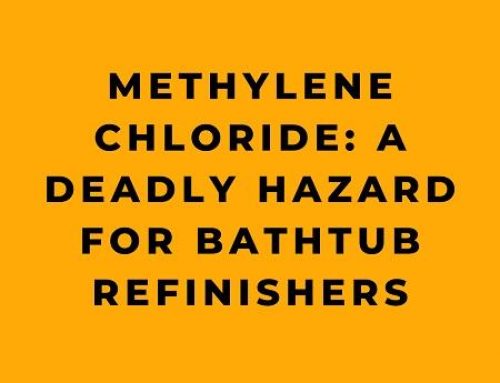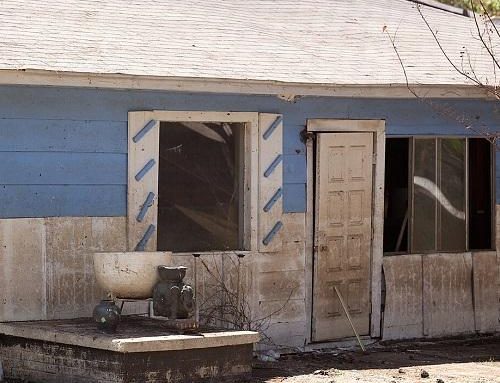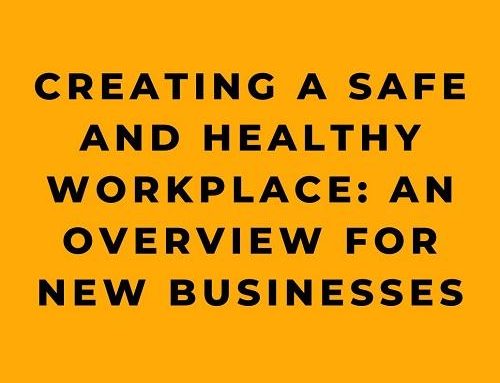Introduction
Today we’re diving into a topic that’s near and dear to my heart – workplace safety. Now, I’ve been to a lot of places and seen a lot of jobs, but there’s one type of workplace that’s a whole different beast – confined spaces.
From the belly of a colossal cargo ship to the narrow tunnels of a coal mine, there are great risks that come with working in these confined spaces.
But here’s the thing – it’s not just about the physical squeeze. No, sir. These spaces can harbor all sorts of hazards, from toxic gases to the risk of engulfment, and they’re not designed for folks to just hang around in. That’s why the good people at OSHA – the Occupational Safety and Health Administration – have some pretty strict rules about these spaces.
Now, I know what you’re thinking. “I’m not planning on crawling into any tight spaces anytime soon.” And that’s fair. But understanding the risks and regulations around these spaces is crucial for anyone in the workforce. Because at the end of the day, safety isn’t just about keeping yourself out of harm’s way – it’s about looking out for each other.
So, buckle up, folks. We’re about to delve into the nitty-gritty of confined spaces and the folks who brave them. And who knows? You might just learn something that could save a life one day.
In the following sections, we’ll explore the definition of confined spaces and the potential hazards they present. We’ll also delve into the importance of a written program, the roles and responsibilities of attendants and entry supervisors, and the crucial part contractors play in this scenario. We’ll discuss the significance of an entry permit and the state programs and consultation services available to help employers. So, let’s roll up our sleeves and get started.
Understanding Confined Spaces
Alright, let’s dive right into the heart of the matter – confined spaces. Now, you might be picturing a tiny closet or maybe the backseat of a compact car, but in the world of OSHA, it’s a bit more specific than that.
A confined space, by definition, is a place that’s large enough for a worker to enter and do their job, but isn’t designed for people to be in there all day. It’s also got a limited or restricted way to get in or out. Think of the inside of a storage tank, a silo, or even an underground vault. These are places where you don’t want to be stuck in for a long period of time.
But here’s the kicker – some of these confined spaces have what OSHA calls “serious safety or health hazards.” These are the real bad boys, the ones that require a special permit to enter. They’ve got one or more of the following characteristics: a hazardous atmosphere, material that could engulf someone, or an internal configuration that could trap or asphyxiate an entrant.
Let’s paint a picture here. Imagine you’re inside a storage tank, and it’s got a buildup of toxic gas. You’re in a tight spot, the air is potentially lethal, and the only way out is a small hatch at the top. That, my friends, is a permit-required confined space.
The risks are real and they’re serious. We’re talking about entrapment, engulfment, hazardous atmospheric conditions – the kind of stuff that can turn a regular workday into a disaster.
But don’t start panicking just yet. The good news is, there are rules and regulations in place to keep workers safe. And that’s what we’re going to delve into next. So, stick around, because understanding these hazards is the first step to preventing them.
The Importance of a Written Program
Let’s move on to the next big thing – the written program. Now, I know what you’re thinking. “I’m not a big fan of paperwork.” And trust me, I get it. But when it comes to working in confined spaces, this isn’t just any old paperwork. This is a life-saving, disaster-preventing, absolutely necessary kind of paperwork.
You see, any employer who’s got workers entering a permit space has to develop and implement a written program for that space. This isn’t just a suggestion from OSHA – it’s a requirement. And for good reason. This written program is like a roadmap to safety. It outlines the measures to prevent unauthorized entry, identifies and evaluates the hazards in the space, and lays out the procedures for safe entry operations.
Think of it like this. If you were about to embark on a journey through a dense, dangerous jungle, you’d want a map, right? You’d want to know where the quicksand is, which plants are poisonous, and what to do if you encounter a hungry jaguar. That’s what this written program is – it’s a map for navigating the potential dangers of the confined space.
And this isn’t a one-size-fits-all kind of deal. Each written program has to be tailored to the specific permit space. It has to include the testing procedures for the atmospheric conditions, the means to eliminate or control hazards, and the duties of each employee. It also has to provide and maintain the necessary personal protective equipment at no cost to the employee.
In other words, this written program is a comprehensive plan for keeping workers safe. It’s a crucial part of working in confined spaces, and it’s a responsibility that employers can’t afford to take lightly.
To give you a clearer picture, a good written program is like a detailed guidebook. It would include a list of the confined spaces in the workplace, a system for preparing and issuing permits, procedures for testing and monitoring atmospheric conditions, and a plan for rescue and emergency services. It would also detail the training required for each role involved in confined space work. This comprehensive document is the backbone of safety in confined spaces.
So, while it might seem like a lot of red tape, remember this – when it comes to safety, every detail matters. And that’s why the written program is so important.
Roles and Responsibilities
Alright, let’s move on to the people who make it all happen – the attendants and entry supervisors. These folks have some of the most important roles when it comes to working in confined spaces. They’re the ones on the front lines, ensuring that everything goes smoothly and safely.
First up, we’ve got the attendants. These are the folks stationed outside the permit space, keeping a watchful eye on the workers inside. They’re responsible for maintaining communication with the entrants, keeping an accurate account of who’s in the space, and ordering evacuation if necessary. They’re also the ones who summon rescue and other services during an emergency.
Now, you might be thinking, “That sounds like a lot of responsibility.” And you’d be right. Being an attendant isn’t a job for the faint of heart. They’ve got to be vigilant, ready to act at a moment’s notice, and they can’t let anything distract them from their primary duties.
Next, we’ve got the entry supervisors. These folks have a whole different set of responsibilities. They need to know the hazards of the space, verify emergency plans and specified entry conditions, and terminate entry and cancel permits when necessary. They’re also responsible for making sure rescue services are available and that unauthorized entrants are removed.
In other words, the entry supervisor is like the captain of the ship. They’re in charge of making sure everything goes according to plan, and if something goes wrong, they’re the ones who have to steer the ship back on course.
Now, I’ve met a lot of hardworking people in my travels, but I’ve got to say, the attendants and entry supervisors working in confined spaces are some of the most dedicated folks out there. They play a crucial role in maintaining safety, and without them, the risks of working in confined spaces would be a whole lot higher.
So, here’s to the attendants and entry supervisors – the unsung heroes of confined space work. Your roles are vital, and your dedication to safety is truly commendable.
Working with Contractors
Now, let’s talk about another important aspect of confined space work – contractors. You see, in many workplaces, it’s not just the regular employees who might find themselves working in a permit space. Contractors, those hardworking folks brought in for specific tasks, might also need to enter these spaces.
And here’s where things get a bit tricky. Because contractors might not be familiar with the specific hazards of a workplace, it’s the employer’s responsibility to inform them about the permit spaces and their dangers. This isn’t just a courtesy – it’s a requirement by OSHA.
Think about it this way. Let’s say you’re a contractor brought in to do some maintenance work inside a storage tank. You’re an expert at your job, but you’re not familiar with this particular tank. Now, wouldn’t you want to know if there’s a risk of toxic gas buildup before you step inside? Of course, you would. And that’s why employers need to inform contractors about these hazards.
But it’s not just about the hazards. Employers also need to inform contractors about the permit space entry requirements, their experiences with the space, and any precautions or procedures to be followed. It’s about giving contractors all the information they need to do their job safely.
And let’s not forget about coordination. When employees of more than one employer are conducting entry operations, the employers need to coordinate their efforts to ensure everyone’s safety. It’s like a dance, really. Everyone needs to know their steps and move in harmony to avoid stepping on each other’s toes – or in this case, to avoid putting anyone’s safety at risk.
Let’s consider a scenario where a contractor isn’t informed about the hazards of a permit space. They might unknowingly expose themselves and their team to serious risks, leading to accidents, injuries, or even fatalities. This could also result in legal consequences for the employer, including fines and penalties. Hence, transparency with contractors isn’t just about compliance, it’s about protecting lives and maintaining a reputation for safety.
So, to all the employers out there, remember this – informing and coordinating with contractors isn’t just about compliance. It’s about ensuring the safety of everyone in your workplace. And that’s a responsibility worth taking seriously.
The Entry Permit
Alright, folks, let’s move on to another crucial piece of the confined space puzzle – the entry permit. Now, I know what you’re thinking. “I’ve heard of a fishing permit, a driving permit, even a permit to keep a pet alligator. But what on earth is an entry permit?” Well, I’m glad you asked.
An entry permit is a document that gives workers the green light to enter a permit-required confined space. It’s not just a piece of paper – it’s a safety measure, a checklist, and a record all rolled into one.
This permit, signed by the entry supervisor, has to be posted at all entrances or made available to entrants before they step foot into the permit space. It’s like a bouncer at a nightclub, making sure only the folks on the list get in.
But what’s on this list, you ask? Well, it’s got to include the name of the permit space to be entered, the names of the authorized entrants, attendants, and individuals authorized to be entry supervisors. It also includes the test results for atmospheric conditions, the purpose of the entry, and known space hazards.
And that’s not all. The entry permit also outlines the measures to be taken to isolate the permit spaces and to eliminate or control space hazards. It’s a comprehensive plan for the entry operation, ensuring that all bases are covered before anyone steps foot inside the confined space.
Now, I’ve seen a lot of permits in my time, but I’ve got to say, the entry permit is one of the most important. It’s not just a bureaucratic hoop to jump through – it’s a crucial tool for ensuring the safety of workers in confined spaces.
So, the next time you hear about an entry permit, remember this – it’s not just a piece of paper. It’s a lifeline, a safety net, and a testament to the importance of preparation and precaution in the world of confined spaces.
State Programs and Consultation Services
Now, let’s shift gears a bit and talk about the folks who are here to help – the state programs and consultation services. You see, when it comes to workplace safety, it’s not just about the rules and regulations. It’s also about the resources and support available to help employers maintain a safe and healthful workplace.
First off, we’ve got the state programs. These are OSHA-approved plans developed by states to ensure job safety and health. They’re like OSHA’s local deputies, enforcing standards that are at least as effective as the federal OSHA standards. We’ve got 24 states, Puerto Rico, and the Virgin Islands currently operating approved state plans. So, if you’re an employer in one of these areas, you’ve got a local resource to help you navigate the world of workplace safety.
But what if you’re a small employer with more hazardous operations and you need a bit more help? Well, that’s where consultation services come in. These services, largely funded by OSHA, are provided at no cost to the employer. They offer comprehensive assistance, including an appraisal of all mechanical systems, work practices, and occupational safety and health hazards of the workplace. They also help employers develop and implement an effective safety and health program.
Now, I know what you’re thinking. “This sounds like a lot of help, but what’s the catch?” Well, here’s the good news – there’s no catch. No penalties are proposed or citations issued for hazards identified by the consultant. It’s all about helping employers establish and maintain a safe and healthful workplace.
So, to all the employers out there, remember this – you’re not alone in your quest for workplace safety. There are resources available to help you, from state programs to consultation services. And taking advantage of these resources isn’t just smart – it’s a crucial step in ensuring the safety of everyone in your workplace.
Conclusion
Well, folks, we’ve covered a lot of ground today. We’ve delved into the world of confined spaces, talked about the importance of written programs and entry permits, and shone a spotlight on the crucial roles of attendants and entry supervisors. We’ve also touched on the responsibilities of employers when working with contractors and the resources available to help maintain a safe and healthful workplace.
But if there’s one thing I want you to take away from all this, it’s the importance of safety in confined spaces. These spaces, as we’ve seen, can be fraught with hazards. But with the right knowledge, precautions, and respect for the rules, these hazards can be managed.
Remember, safety isn’t just about following rules – it’s about looking out for each other. It’s about making sure that everyone gets to go home at the end of the day. And in the world of confined spaces, that means understanding the risks, following the procedures, and never taking safety for granted.
So, whether you’re an employer, a worker, or a contractor, I hope this discussion has given you a better understanding of the importance of safety in confined spaces. And remember, no job is so important that we can’t take the time to do it safely.
As we wrap up our journey into the world of confined spaces, it’s clear that safety isn’t just a priority, it’s a necessity. The hazards are real, and the risks are high. But with the right knowledge, precautions, and respect for the rules, we can make these spaces as safe as possible. Now, you might be wondering, “Where can I get the training and information I need to navigate these spaces safely?” Well, I’m glad you asked.
OSHA’s May 2015 Confined Spaces in Construction regulation (CFR 29 1926 Subpart AA) has specific requirements for construction activities in confined spaces and also clarifies many of the rules included in its Permit-Required Confined Spaces Standard for General Industry (29 CFR Part 1910.146). This means that even if you don’t consider yourself a “construction-type” business, these standards could still apply to you.
That’s where our “Confined Space Entry” training products come in. They provide employees with the information they need to stay safe in Permit Spaces and help employers stay in compliance with OSHA requirements, whether they’re doing “general industry” or “construction” type work.
Our range of products, including the new “Micro-Learning” and full-length online courses as well as the DVDs and interactive CD courses, cover topics integral to understanding these issues. From reducing risk with a Permit Space Program, understanding the Entry Permit, testing for hazardous atmospheres, to making a space as safe as possible, our courses offer a step-by-step approach to safe entry. We also cover the roles of attendants and evacuation procedures, and even delve into “special” situations.
And the best part? All “Confined Space Entry” products are available in English and Spanish. We also offer a detailed course outline in PDF format for your convenience.
Our “Confined Space Entry” MicroLearning curriculum includes concise 3 – 5 minute courses on key topics like “Reducing Risk with a Permit Space Program”, “The Entry Permit”, “Testing for Hazardous Atmospheres”, “Making a Space as Safe as Possible”, “A Step-by-Step Approach to Safe Entry”, “Attendants and Evacuation”, and “Some Special Situations”.
So, whether you’re an employer, a worker, or a contractor, equip yourself with the knowledge and skills to navigate confined spaces safely. Remember, no job is so important that we can’t take the time to do it safely. Stay safe out there, folks.










